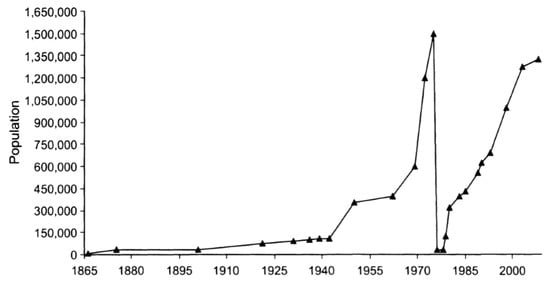Urbanization in Cambodia has experienced rapid growth over the last two decades, at an impressive rate of about 5% annually. In 2020, around 24% of Cambodians lived in cities, up from 18% in 2000. This shift towards city living has significant implications for the construction sector, as more people migrate to urban areas in search of better job opportunities, living conditions, and a higher quality of life.
Urbanization in Cambodia and Economic Growth
Urbanization plays a crucial role in Cambodia’s economic development. Urban areas contribute a staggering 80% of the country’s GDP, illustrating the strong link between economic growth and urban centers. As more businesses are drawn to these cities, the demand for construction projects, including residential, commercial, and infrastructure developments, has surged. This trend is driving investment in the construction sector, with total construction investment reaching around $7 billion in 2020.

This boom in construction is not just about meeting the needs of the growing population but also about supporting the country’s broader economic ambitions. As Cambodia becomes more urbanized, the demand for new buildings, roads, and utilities will only increase. This provides an opportunity for both local and international construction firms to invest in projects that will shape the future of Cambodian cities.
The Role of the Construction Sector
The construction sector has emerged as one of the key pillars of Cambodia’s economy. It contributed around 7.5% to the national GDP in 2021, making it one of the top sectors driving economic growth. With ongoing urbanization, the demand for new buildings—both residential and commercial—continues to rise. Phnom Penh, the capital city, is at the heart of this growth, with over 1,800 high-rise buildings (over ten stories) either under construction or planned as of 2021.
The trend towards vertical development is not just a reflection of urban expansion but also a response to land scarcity. As more people move to cities, space becomes limited, pushing developers to build upwards. This increase in high-rise developments is a clear indication that Cambodia’s cities are undergoing rapid modernization.
Residential Demand and Urban Challenges
Urbanization in Cambodia also fuels the need for more housing. With cities like Phnom Penh experiencing significant population growth, the demand for both luxury apartments and affordable housing is increasing. However, rapid urbanization has also led to challenges, particularly for low-income residents. About 9.5% of the urban population in Cambodia still lives below the poverty line, which highlights the need for affordable housing and improved infrastructure in the cities.
The construction industry has a critical role to play in addressing these challenges. As the country urbanizes, there is a growing need for projects that focus not just on luxury developments but also on creating housing options for all income levels. This will help ensure that Cambodia’s urbanization is both inclusive and sustainable.
Infrastructure Development and Future Opportunities
With the urban population continuing to grow, Cambodia’s infrastructure is under increasing strain. Roads, transportation systems, and utilities need significant upgrades to keep up with the pace of urbanization. This creates vast opportunities for construction companies to engage in infrastructure projects that improve the quality of life for city residents.
Moreover, addressing the need for affordable housing and urban services will be essential for ensuring that Cambodia’s urban growth is sustainable. The government and private sector must work together to develop smart, green, and affordable urban solutions that cater to the diverse needs of the population.
Urbanization is fueling Cambodia’s construction boom, with growing demand for residential, commercial, and infrastructure projects. As more people move to cities, the Urbanization in Cambodia trend will continue, offering vast opportunities for construction companies and investors. However, to make this growth sustainable, it is crucial to focus on inclusive development, ensuring that the benefits of urbanization reach all citizens.
